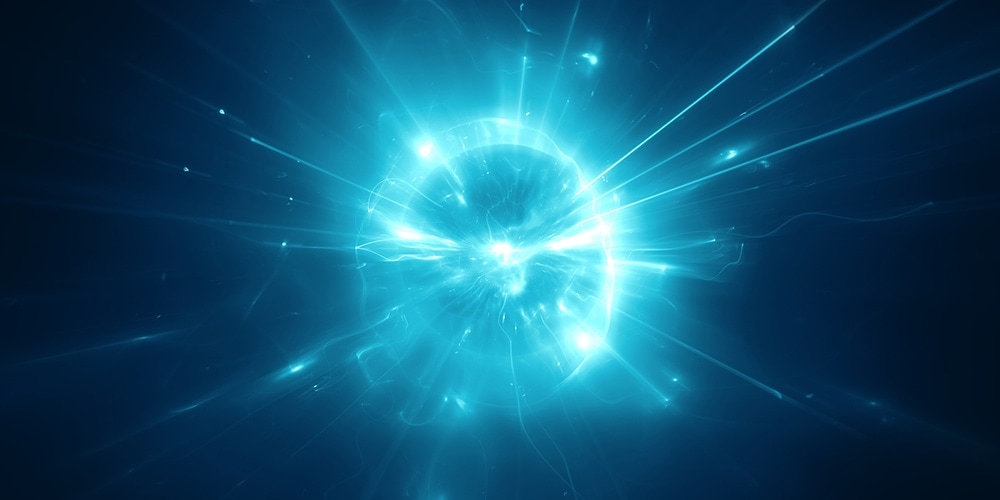
About 2,600 years ago people started to wonder about the nature of reality. Surely some must have wondered before then, but only the Greeks, it seems, wrote down their musing in a systematic “scientific” manner. What are things, they asked, made of at their most basic level—apart from how they appear to us, and before they are parsed, analyzed, systematized, and filtered by our debatable senses? What is the building block of nature, the smallest possible entity that can’t be broken down into anything other than smaller proportions of itself because there is nothing else other than itself?
Thales (about 600 BC) thought that entity was water. Anaximenes argued that the most prime element was air. Anaximander believed that “the boundless” (Greek: apeiron, “that which has no boundaries”) was the foundation of material reality. Heraclitus argued for fire as the prime stuff, while others thought it was earth, air, water, and fire. Pythagoras, from whom we get the Pythagorean theorem, believed that all reality was made out of numbers, whole numbers too. Democritus and Leucippus theorized that all matter was composed of tiny invisible particles called “atoms,” from a Greek word meaning “that which cannot be split.”
Atomic physics, of course, has progressed since Democritus and Leucippus, even if their term “atom” has endured. Yet atoms are composed of two classes of smaller particles: quarks and leptons. For now, quarks and leptons are deemed the long-sought-for ultimate entity, the building blocks of all physical reality—even if according to quantum physics they really are quantum waves that assume particle-like attributes only when we measure them. (As physicist Philip Ball explains in Beyond Weird: Why Everything You Thought You Knew about Quantum Physics is Different: it’s one thing to say that a tennis ball is moving 100 mile per hour when I measure it; it’s quite another to say that it’s “travelling 100 mph because I measured it.”) For sanity’s sake, we’ll stick with good old classical physics: quarks and leptons as fundamental particles.
Now to my point. As believers our great hope, our only hope, is the resurrection of the dead at the Second Coming. Without that, Paul wrote, “your faith is futile; you are still in your sins. Then those also who have fallen asleep in Christ are lost” (1 Cor. 15:17, 18).
The resurrection of the dead? Such an outrageous notion, upon which our only hope rests, so transcends all human knowledge, understanding, technology, and imagination that all these combined can barely begin to approach the idea itself, much less the physical mechanisms behind it. It must be accepted by faith or not at all.
However, science has come to understand that reality, at some level, is information, or filled with information, especially the living world. Google, for instance, how much information exists in a single cell and you’ll get the idea. One web site expressed it like this: “The DNA of a single cell contains so much information that if it were represented in printed words, simply listing the first letter of each base would require more than 1.5 million pages of text!”
So if the physical world that we arose from and exist in is, at its core quarks and leptons, couldn’t the God who not only created and sustains that world just reconfigure the quarks and leptons when the time comes to resurrect us? Without wanting to take the computer analogy too far, if just zeros and ones, when combined with the information in a software package, can do all the amazing stuff computers do—imagine what the living God could do with all the information He has.
Mocking the resurrection, atheist Bertrand Russell asked what happens to those whom cannibals ate, because their bodies are now part of the cannibals’. So who gets what in the resurrection? But suppose the Lord simply grabs quarks and leptons, the ultimate building blocks of existence, from wherever, and, based on the information that He possesses about each one of us, reconstructs us from those quarks and leptons on up? He doesn’t need our original ones; any would do. In fact, He could just speak new quarks and leptons into existence and go from there.
Either way, the result?
“For the perishable must clothe itself with the imperishable, and the mortal with immortality. When the perishable has been clothed with the imperishable, and the mortal with immortality, then the saying that is written will come true: ‘Death has been swallowed up in victory’” (1 Cor. 15:53-55).
How God does it, whether from quarks and leptons, or by a complete new physical reality—who knows? All we know is that thanks to Jesus, He will.
Clifford Goldstein is editor of the Adult Sabbath School Bible Study Guide. His most recent book, Baptizing the Devil: Evolution and the Seduction of Christianity, is available from Pacific Press.